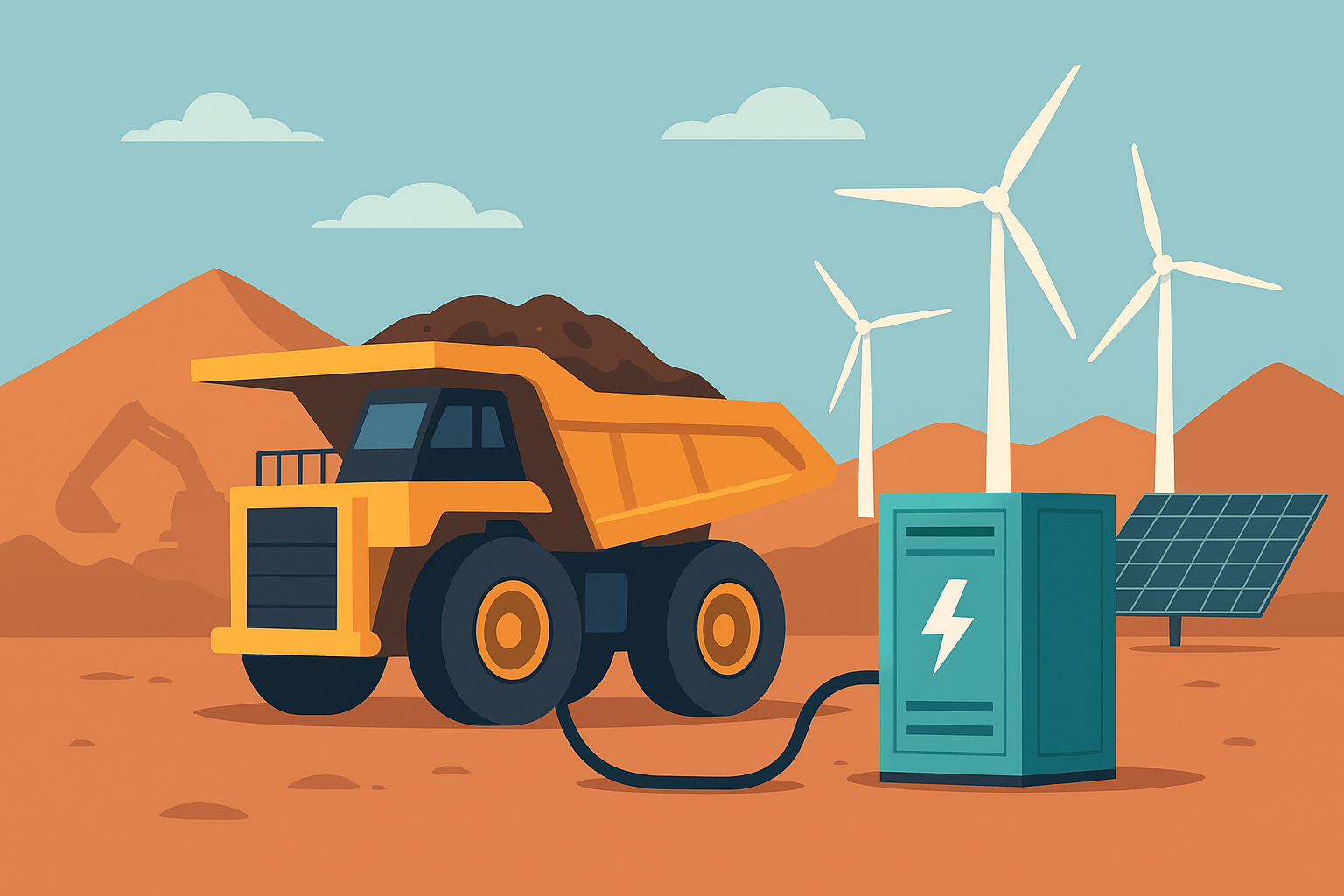Global miners are under intensifying scrutiny to meet decarbonization goals, but execution is proving more complicated—and costlier—than anticipated. Fortescue Ltd. (ASX: FMG), one of the world’s largest iron ore producers, has revised its climate transition strategy, postponing its “real zero” emissions target by a year while dialing back its much-touted hydrogen ambitions. Instead, the company will prioritize electrification, renewable energy, and large-scale battery storage across its operations.
This move comes at a time when investors are increasingly focused on how resource giants balance the urgency of decarbonization with financial discipline. Fortescue’s pivot underscores a broader recalibration in the mining sector: hydrogen may remain part of the long-term vision, but capital and technology constraints are pushing miners toward more mature, commercially viable pathways.
Why This Matters for Investors
Hydrogen was once heralded as a silver bullet for heavy industry emissions, but challenges around cost, infrastructure, and scalability are slowing its adoption. Fortescue’s decision to pull back highlights both execution risk and investor caution. According to The Australian, the company has shifted its “real zero” target from FY2029-30 to FY2030-31, a modest delay but one that signals the difficulty of rapidly decarbonizing an energy-intensive business.
For investors, this is not just about Fortescue’s roadmap—it’s about a sector-wide reality check. Mining equipment powered by hydrogen remains at pilot stage, requiring massive capital expenditure and uncertain returns. By redirecting resources into electrification and renewables, Fortescue is signaling a preference for technologies that can deliver nearer-term results, potentially reducing execution risk and protecting shareholder value.
Market and Sector Implications
Hydrogen’s hurdles: BloombergNEF has estimated that green hydrogen costs remain two to three times higher than natural gas on an energy-equivalent basis, even with subsidies. Infrastructure, from storage to distribution, remains underdeveloped. This creates headwinds for miners banking on hydrogen-powered fleets in the short run.
Electrification’s edge: Battery-powered mining trucks and renewable-powered operations are proving more viable. Rio Tinto and BHP have also accelerated trials of electrified fleets, reflecting a broader sector shift. McKinsey forecasts that electrification in mining could cut operating costs by up to 25% while reducing emissions intensity.
Capital allocation trends: Investors are increasingly rewarding miners that pursue practical decarbonization strategies with clear timelines. Funds with ESG mandates, which accounted for over $2.5 trillion in assets globally as of 2025 (Morningstar), are scrutinizing which technologies companies choose to prioritize.
Future Trends to Watch
- Technology adoption curve: Expect hydrogen to remain a longer-term solution, potentially viable after 2035 as costs fall. In the meantime, miners doubling down on electrification could capture early ESG capital flows.
- Policy and regulatory pressure: Governments, particularly in the EU and Australia, are tightening disclosure requirements and carbon pricing mechanisms. This will accelerate investment into scalable solutions like renewables and battery storage.
- Supply chain beneficiaries: Companies specializing in large-scale batteries, solar projects, and electrified mining equipment are well positioned to benefit from this pivot. Watchlisted names may include global battery producers, renewable energy developers, and OEMs producing electrified heavy equipment.
Key Investment Insight
For investors, Fortescue’s recalibration underscores the importance of separating hype from execution. While hydrogen remains a critical part of long-term decarbonization strategies, its commercial application in mining is not yet mature. By prioritizing electrification and renewables, Fortescue is aligning with technologies that offer quicker payback and more predictable outcomes.
The actionable takeaway: investors should focus on mining companies with clear, achievable decarbonization roadmaps—particularly those tied to scalable electrification and renewable energy solutions. In parallel, upstream beneficiaries such as battery producers and renewable developers may present attractive medium-term opportunities.
As decarbonization strategies evolve, one thing remains certain: the balance between ambition and execution will define which miners outperform in the next decade. Fortescue’s pivot provides a timely reminder that the path to net zero is rarely linear—and that pragmatic adjustments can often protect long-term shareholder value.
Stay ahead of these shifts and more by following MoneyNews.Today, your trusted source for daily investor insights across global markets.





